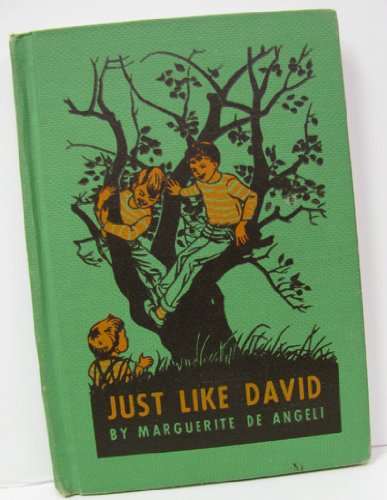Jan Bloom writes in her authors’ guide, Who Should We Then Read?:
“From her earliest days, Marguerite had a desire to draw and paint. When not yet two years old she experimented with some pastels she found next to a portrait her father was sketching. She knew she must not touch the face so she did a border around it, using every color in the box of pastels. Her parents were stern, but loving. She was scolded but not punished for her artistic expression.”
 Marguerite was a professional singer before she married, but after her first three children were born, she began drawing, hoping to become an illustrator. The first drawing she sold was to a Sunday School publication. Her first book, fourteen years later, was Henner’s Lydia, about an Amish girl. Marguerite de Angeli won the Newbery Award for her story of a boy handicapped by polio during the Middle Ages, A Door in the Wall.
Marguerite was a professional singer before she married, but after her first three children were born, she began drawing, hoping to become an illustrator. The first drawing she sold was to a Sunday School publication. Her first book, fourteen years later, was Henner’s Lydia, about an Amish girl. Marguerite de Angeli won the Newbery Award for her story of a boy handicapped by polio during the Middle Ages, A Door in the Wall.
I found Just Like David on the shelf in one of the local thrift stores that I frequent, looking for bargain book treasures. I had never heard of this particular de Angeli title, but I knew from looking at the illustrations and sampling the story that it would be good. The book is 122 pages long with nice large print, hardcover and lots of pictures; it’s we would nowadays call a “beginning chapter book”. Just Like David tells the story of a five year old boy, Jeffrey, who wants to go to school like his older brother, David. But Jeffrey is not old enough to attend school in Pennsylvania where his family lives. However, when the family decides to move to Ohio for Father to take a new job, there’s a chance, just a little “if”, that Jeffrey might be able to go to school, too, just like David.
Most of the story is about the car trip from Pennsylvania to Ohio. It’s quite an adventure for Mother and Father and three small boys (baby Henry is two years old). That the journey takes place in another era (the book was published in 1951) is obvious from the details: no seatbelt, no carseat for Henry, tollgate tickets, and thermos bottles. Some of these details would need to be explained to present day readers or listeners, but it would be fun to read along until you came to an unfamiliar word or phrase and then discuss. Father explains many unfamiliar concepts to David and Jeffrey as they go on their long car trip and then later as they explore their new home and it environs: things like courthouses and county seats and turnpikes and Indian arrow heads and fossils and many other discoveries that the boys make along the way.
Similar to Ms. de Angeli’s other books, Just Like David is a gentle story about a child growing up in a loving family. It might be a little slow for today’s media-fed children, but if Mister Rogers and Carolyn Haywood and Laura Ingalls Wilder are about your speed, Just Like David might be just right, too.
I thought it was a delight, and I learned a new expression: “put your mouth!” I tried to look up this idiom, used several times in the book by Jeffrey, David and their family, on the internet, but I got some rather nasty results and nothing that defined the term as they used it. From context, I think it means something like “unbelievable” or “I’ll be a monkey’s uncle!” Maybe it was something the de Angeli family said or an expression people in the midwest used back in the 1950’s. I rather like it and think I’ll try to revive the saying.
“I have eight of Mrs. de Angeli’s lovely books in my library now, and I’d be pleased as punch to have the rest of them!”
“Put your mouth!”
Put your mouth! Ha!
I love Door in the Wall SO much. Thanks for bringing this one to my attention.